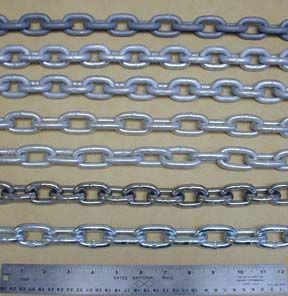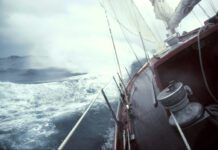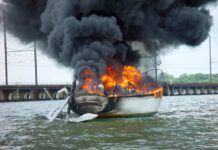Almost all chain used for permanent moorings is made of welded steel alloy, galvanized to forestall corrosion not, in the long run, to prevent it. The common hot-dip process involves, first “pickling” the raw welded chain in acid baths to clean it, then immersing it in molten zinc, which bonds metallurgically to the steel surface and forms a protective barrier. The zinc also acts as a sacrificial element against galvanic corrosion, an all-too-familiar process, especially in saltwater.
However, all is for nought. Entropy wins, as it always does, and mooring chain degrades, sometimes with amazing speed. There are several causes: galvanic corrosion from dissimilar metals, corrosion from stray electrical currents in the water, chemical corrosion, and simple abrasion from the chain links rubbing against one another.
According to Mike Muessel, owner of Oldport Marine in Rhode Island who has over 30 years of experience installing and maintaining moorings friction is the worst culprit in Newport Harbor, R.I. “It’s the wave action and the constant movement and rattling that creates the wear on the chain.”
John Doyle, national sales manager of Acco Chain and Lifting, says that chemical and galvanic corrosion are most worrisome from a chain-maker’s point of view.
Unlike bow-anchor chain rode that’s stored onboard, mooring chain is never regalvanized. It’s not worth it in most places it would need to be done yearly. Instead, it’s watched, and when nervousness overcomes frugality, it’s simply replaced.
To learn more about mooring chain and read our longevity test results, purchase Anchor Chain/Rode from Practical Sailor.









































